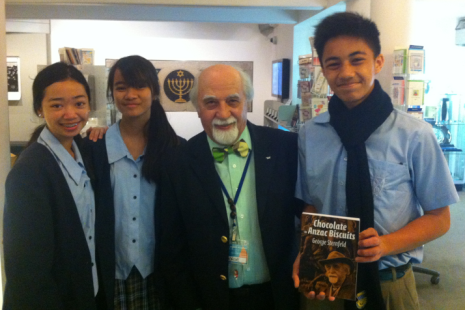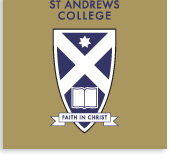 |
It was a cold day in the city, suitable for the cold stretch of emotional learning that awaited Year 9 as soon as we walked through the Museum doors on the 15th October 2014. No student could doubt the great privilege of visiting the Sydney Jewish Museum, but the significance of the visit was the information we all received, that not only would broaden our studies as History students, but would also stay with us for the rest of our lives.
It began with a lecture from the Holocaust survivor George Sternfeld. He explained to the group about his family’s struggle living in Warsaw at the outbreak of the 1939 invasion of Poland by German forces. We listened to his tale in disbelief as he described the continual threatening of his and his family’s lives. Due to the desperation of the time, his father fabled his way into an explosives producing job working for the Soviet Russians. This was the salvation of his family from the sheer horror of Poland that they were able to leave behind when they were smuggled to Siberia. Once there, their ears turned deaf and their eyes blind towards the outside world and the happenings of the war. May 1945 brought the end of the war and the liberation of Germany so the family set out for home again. Only, they didn’t have a home anymore. The monstrosity of the Holocaust had reduced Warsaw, the place of their upbringing, the epicenter of their security and the pinpoint of their memories, to nothing. Completely decimated were their home and all their extended family. The realism of his story hit the group like a wall. For too long had we heard of the abhorrence of World War II but the devastating account of a real life person, with real emotion and thoughts, definitely struck nerves.
The second part of our excursion included a presentation on the resistance of Jewish people living in Nazi Europe. The accounts and information displayed were both enlightening and frightening. Personally, the presentation really displayed the innocence of people that were struck by tragedy. Sitting through the presentation, I remarked upon a script written by the illustrious Martin Niemoller, “First they came for the Socialists, and I did not speak out—Because I was not a Socialist. Then they came for the Trade Unionists, and I did not speak out—Because I was not a Trade Unionist. Then they came for the Jews, and I did not speak out—Because I was not a Jew. Then they came for me—and there was no one left to speak for me.” Martin’s poem spoke to me in that Museum amidst the images of destruction and melancholy because essentially, the Holocaust was a trial not just for the Jewish people, but the whole of the European people who were all under condemnation of a purely evil regime.
Finally, we toured the Museum with George Sternfeld as our guide. The exhibits were historically astounding and powerfully resourceful. Some exhibitions included: Hitler’s Rise To Power, Resistance, Liberation, The Camps and The Righteous Among Nations. However the exhibition that touched me was the Jewish Children’s exhibition. One sculpture by the Israeli artist Elza Pollak entitled “All That Remained” displayed over a million shoes stolen from the Jewish children that were mass exterminated in the burnings of the Jews at Treblinka, Poland. The sheer cruelty that the exhibition portrayed completely shocked my friend Victoria Short and I. At the end of the tour George Sternfield gifted me with a pin as a result of my participation in the discussions. The pin was emblazoned with the Hebrew word “Remember”. In memory of George and the family the Nazi’s stole from him, I will remember and I will continue to remember for the rest of my life.
And so the day came to a close. A now sullen group of Year 9 students loaded the buses to return to a normal life at St Andrews. However the key message of this excursion now shines through each student. Where we may be returning to the regularity of our lives, we left that Museum with the legacy of millions captured in our minds. The heartbeat of all the children, adults, elderly that were viciously killed during the Holocaust beats through every person who begs witness to their history. Thank you to Mrs Bradford for organising and taking us on this fulfilling experience and to Mrs Weaver, Mrs Wallis, Miss Simmonds, Miss Pett and Ms Blackwell for taking care of us on the day. With this knowledge and memories we can honestly now say we remember.



